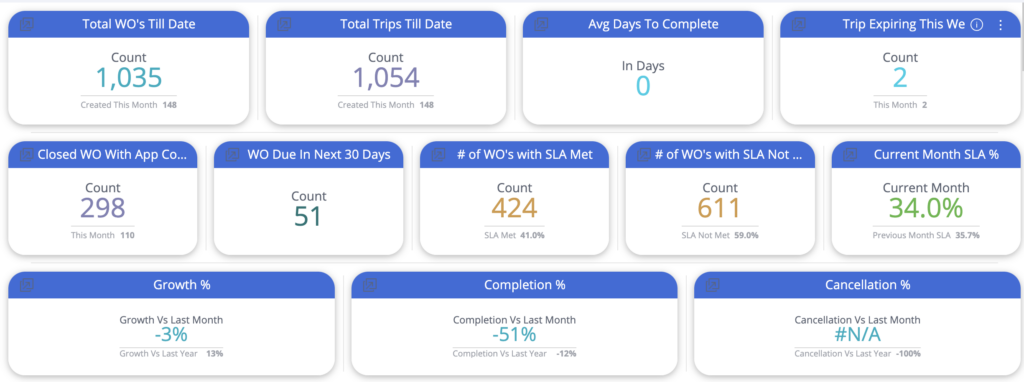What is Service Automation?

Embracing Service Automation in Facilities Management
The pressure on facilities management (FM) teams to deliver seamless operations across multiple locations has never been higher. Service automation emerges as a transformative solution, offering a blend of technology and strategy to redefine the landscape of FM. By automating tasks, service automation technology facilitates faster, easier, and more efficient completion of essential FM tasks. This shift towards digitalization not only streamlines processes but also elevates the strategic role of FM within organizations.
The Strategic Benefits of Service Automation
The adoption of service automation in facilities management is a must for any aggregator to thrive in today’s business landscape. Primarily, it transforms how businesses plan, schedule, manage, and analyze maintenance and repair efforts across all their locations. Key advantages include enhanced contractor selection and management, streamlined work order management, and improved asset management. These benefits collectively contribute to a more efficient operational model, where decision-making is informed, and resource allocation is optimized.
Streamlining Work Order and Vendor Management
Another one of the core functionalities of service automation is its ability to simplify work order and vendor management. Facilities managers can now handle all service requests, contractor proposals, and preventive maintenance tasks from a single dashboard. This centralized approach not only saves time but also ensures accuracy and consistency in managing repair and maintenance work. Additionally, the ability to source qualified vendors and manage compliance data effortlessly further enhances the efficiency and reliability of FM operations.
Enhancing Asset and Preventive Maintenance Management
Effective asset management is crucial for prolonging the lifespan of a company’s physical assets and ensuring their optimal performance. Service automation provides a comprehensive asset management solution, enabling facilities managers to keep detailed records of equipment, including work history, warranties, and maintenance records. This information is invaluable for anticipating repair and maintenance (R&M) needs and planning preventive maintenance. By scheduling routine maintenance in advance and setting not-to-exceed levels, organizations can avoid unexpected breakdowns and costly repairs, ensuring a smoother operational flow.
Driving Insights with Advanced Analytics and Reporting
Service automation offers deep insights into operational and strategic data through advanced analytics and reporting. Facilities managers can access real-time updates on operational performance, spending trends, and contractor efficiency. This wealth of information supports strategic decision-making, enabling FM teams to identify opportunities for cost savings, efficiency improvements, and service quality enhancements. By leveraging data analytics, organizations can make informed decisions that align with their long-term operational goals.


Integrating Service Automation for Seamless Operations
Integrating service automation into existing business processes is a critical step towards achieving seamless operations. Organizations can expect a reduction in data input errors, streamlined payment and audit processes, and an overall enhancement in operational efficiency. With continuous support from technical teams and comprehensive training for staff, the integration process is designed to be as smooth and efficient as possible.
Lastly, the adoption of service automation in facilities management is a strategic move towards operational excellence. By streamlining work order and contractor management, enhancing asset and preventive maintenance management, and driving insights with advanced analytics and reporting, service automation empowers FM teams to perform at their best. The integration of such systems into business operations marks the beginning of a new era in facilities management, where efficiency, strategic decision-making, and operational excellence become the hallmarks of success.
You may also be interested in
The Next Generation of Work Order Management
- Operations
As a national or regional facility service business owner, you’ve likely faced challenges that bog down your operations—managing subcontractors through spreadsheets, tracking service requests across disconnected systems, and struggling with high call volumes from clients requesting status updates. These issues can eat up your team’s time and hurt your ability to deliver the quality service…
What is Service Automation?
- Uncategorized
Embracing Service Automation in Facilities Management The pressure on facilities management (FM) teams to deliver seamless operations across multiple locations has never been higher. Service automation emerges as a transformative solution, offering a blend of technology and strategy to redefine the landscape of FM. By automating tasks, service automation technology facilitates faster, easier, and more…
What is a Facility Management Service Aggregator?
- Automation
- Thought Leadership
A service aggregator partners with various service providers from different trades and service lines to meet the needs of their clients. Unlike self-performing facility management companies that execute the work themselves using their own team members, aggregators outsource the work to a network of specialized partners. For example, while a self-performing company might have electricians,…
The Next Generation of Work Order Management
- Operations
As a national or regional facility service business owner, you’ve likely faced challenges that bog down your operations—managing subcontractors through spreadsheets, tracking service requests across disconnected systems, and struggling with high call volumes from clients requesting status updates. These issues can eat up your team’s time and hurt your ability to deliver the quality service…
What is Service Automation?
- Uncategorized
Embracing Service Automation in Facilities Management The pressure on facilities management (FM) teams to deliver seamless operations across multiple locations has never been higher. Service automation emerges as a transformative solution, offering a blend of technology and strategy to redefine the landscape of FM. By automating tasks, service automation technology facilitates faster, easier, and more…
What is a Facility Management Service Aggregator?
- Automation
- Thought Leadership
A service aggregator partners with various service providers from different trades and service lines to meet the needs of their clients. Unlike self-performing facility management companies that execute the work themselves using their own team members, aggregators outsource the work to a network of specialized partners. For example, while a self-performing company might have electricians,…
In This Article
Affiliates






Affiliates







